19 Nights / 20 Days
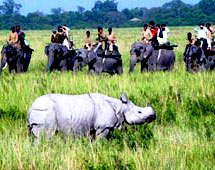
Met upon arrival at the airport & transfer to your hotel in Kolkata - The largest metropolis in India, Calcutta is a vibrant city on the move, volatile and unpredictable. The Gateway to India, till 1912, and the capital of the Raj in India, it still bears the Victorian imprint on its streets and structures. A city just about ready to burst at the seams, Kolkata is home to more than 16 million people.
Kolkata is the gateway to Eastern India. A city with rich heritage, bustling streets and bewildering variety of facets.
Morning transfer to airport to board flight for Guwahati. On arrival continue drive to Manas.
Manas National Park is situated on the foothills of the Himalayas and a part of it extends to Bhutan. It was declared a sanctuary on October 01, 1928 and was designated a World Heritage site in December 1985. The sanctuary is home to a great variety of wildlife, including tiger, Golden Langur, Wild Buffalo, Hispid Hare, Pigmy Hog, Capped Langur, Indian one-horned Rhinoceros, Elephant, Gaur, Hog Deer, etc.
Manas known for its Project Tigers, Rhinos & Elephants, and is Assam's one of the two Tiger projects. The scenic beauty and rare wealth of wild life combine with this unique world heritage site to offer one of the most enthralling experiences.
Note: The park remains open from 1st Nov to 30th April only.
Early morning go for elephant safari. Post breakfast take a Jeep safari with packed lunch. This 90 kilometre jeep safari is of especial interest to the birdwatcher, takes in the area round the village of Koklabari, which is now being developed as a bird-watching area, then through jungle to Alabari and Namlang. There are a number of watch towers built by the forest department on both these routes. Return to the lodge in the evening. Overnight at the lodge.
After breakfast drive to Nameri NP.
Nameri National Park is located on the banks of the river Bhorelli on the northern side of the Brahmaputra. Situated on the foothills of the great Himalayas, it is another tiger and bison country. Deciduous forests with the river Jia Bhorelli flowing by its side, have added a unique charm to it. Nameri is famous for its sizeable population of the very rare White-winged Wood Duck. Other interesting birds to be found here includes White-cheeked Partridge, Great, Wreathed, and Rufous-necked Hornbills, Ruddy, Blue-eared, and Oriental Dwarf Kingfishers, Oriental Hobby, Amur Falcon, Jerdon's and Black Baza, Pallas's, Grey-headed, and Lesser Fish Eagles, Silver-backed Needletail,long tailed broadbill,little pied flycatcher, Mountain Imperial Pigeon, Blue-naped Pitta, Slender-billed Oriole, Hill Blue Flycatcher, White-crowned Forktail, Sultan Tit, Black-bellied Tern, Jerdon's Babbler, Rufous-backed Sibia, Yellow-bellied Flowerpecker, Red-throated Pipit, Long-billed Plover and Ibisbill.apart from these a number of forest birds like pygmy woodpeckers, woodpeckers ,orioles, barbets,thrushes etc.also 6-7 species of bulbuls can be easily seen in a day.
Note : No elephant or jeep safari facility is available at Nameri National Park.
Note: The park remains open from 1st Nov to 30th April only.
Early morning go for a jungle walk inside the park. Post breakfast go for river rafting on the Jia Bhorali river. Later in the afternoon drive to Kaziranga National Park (110 kms / 02 ½ hrs) and check in at hotel for 2 nights. Later in the afternoon go for a jeep safari. Overnight at hotel.
Kaziranga National Park (100 mtr approx.) - is a World Heritage Site, where more than 75% of the world’s total population of the great Indian One Horned Rhinoceros can be found. It lies on the southern bank of the Brahmaputra River and is one of the oldest parks of Assam. Besides rhinos, the Asiatic Water Buffalo numbering over 1200, elephants over 1000, tigers more than 81, Swamp deer, Barking deer and Hog deer can be seen. About 400 species of birds are found in Kaziranga National Park. Swamp Francolin, Kalij Pheasant, Greylag Goose, Gadwall, Eurasian Wigeon, Mallard, Northern Shoveller, Northern Pintail, Streak Throated Woodpecker, Bay Woodpecker, Oriental Pied Hornbill, Great Hornbill, Osprey, Pallas’s Fish Eagle, Changeable Hawk Eagle, Pied Falconets, Lesser Adjutant Stork, Greater Adjutant Stork, Black necked Stork, Grey-headed Lapwing, Indian White Backed Vulture, Long Billed Vulture, along with a large number of Spotted Billed Pelican. Sighting is excellent and is always a great experience. the specialities here is the blue naped pitta among a host of eagles and waterfowl.
Note: The park remains open from 1st Nov to 30th April only.
Early morning we take an elephant safari in the central range of the park followed by a jeep safari to Eastern range after breakfast. In the afternoon, we visit the western range of the park by jeep. Overnight at the hotel.
The Central Range passes through the entire habitat spectrum from ox-bow lakes, savannah woodland to Dillenia Swamp Forest. It is very good for mammal sightings as well as birds (Blue-bearded Bee-eater, Great Hornbill, Rufous Woodpecker). The elephant ride also takes place in this part of the park and one gets good views of the Rhino while traversing through its terrain of swamps and tall grass. There are chances of seeing Bengal Florican from the elephant.
The Eastern Range is good for water birds such as Bar-headed Geese, Falcated Duck, Grey-headed Lapwing and Spot-billed Pelican (a colony of c 200 pairs of this globally threatened species nesting on Bombax trees is located here).
The Western Range has the highest density of Rhinos, as this part is swampier with extensive Haemarthia compressa stands. It is also good for grassland birds and raptors (Swamp Francolin, Pallas's Fish-Eagle). Smooth Indian Otters Lutrogale perspicillata is sometimes seen fishing in the ox-bow lakes.
Timing (Kaziranga NP)
Elephant Safari - approx 01 hour duration
05.30 to 06.30
06.30 to 07.30
15.00 to 16.00
Note : Elephant safari for foreign nationals are held only on Kaziranga Range, Kohora (Central Range)
Jeep Safari
Forenoon : Entry time between 07:00 to 09:30 Hours. Visiting time till 12:00 Noon
Afternoon: Entry time between 13:30 to 15:00 Hours. Visiting time till sunset.
After breakfast we drive to Neematighat (80 kms / 02 hrs) for ferry crossing (1 hr downstream boat cruise- the time depends upon the water level of the river) to Majuli - the largest inhabited river island in the world and famous for the Vaishnavite Satras or monasteries (Kamalabari Satra, Auniati Satra, Benganti satra, and many more) and culture. It is nestled between the confluence of the Subansiri and the Brahmaputra River. Visit the monasteries and interface with the tribes on the island. Return to mainland. Overnight at hotel.
Majuli Island-A World Heritage Site, is located in the Brahmaputra River and is the largest inhabited riverine island in the world. The island has long served as a monastic retreat to the Vaishnavite community and is noted for its beautiful rural setting and the traditional Assamese and Mishing tribal architecture.
On arrival, you will be transferred by road to a monastery, enroute pass through both Assamese and Mishing Villages - the Mishing houses are typified by being built on stilts and their ‘long house’ style of design. At the monastery you will be given an orientation tour by one of the monks of the monastic cell and temple. (Please note that you will be expected to remove your shoes when entering the Vaishnavite monasteries). These Satras were set up by Srimanta Shankerdev, the leader of Vaishnavite revival in the 16th Century. These are active and nurture the traditional dance form 'Satriya' (which is the 5th nationally recognized dance form other than Bharatnatyam, Kathak, Kathakali and Manipuri), music and crafts (mask- making), besides religious teachings.
Today morning visit Gibbon Wildlife Sanctuary (22 kms/ 40 mins). Later drive to Dibrugarh (160 kms / 03 hrs). Enroute we visit Ahom monuments and temples which encompass the 600 year old history of the Ahom Dynasty. Check in at Heritage Chang Bungalow for overnight.
Gibbon Wildlife Sanctuary, famed for its hoolock gibbon population, is an isolated wildlife forest surrounded by tea plantations. With an area of around 20 sq km, it is in the south bank of the Brahmaputra River in Jorhat District, Assam. This sanctuary was established with the aim to protect the Hoolock gibbon, an ape species, in the country. There are about 40 species of mammals that live in the sanctuary. Gibbon Wildlife Sanctuary protects capped langur, stump-tailed macaque, pigtail macaque, Assamese macaque, rhesus macaque and slow loris. It is also a habitat for elephant, leopard, Chinese pangolin, & Malayan giant squirrel.
Sivasagar was once the capital of the Ahom Kings. The Shans who came from Thailand through Northern Myanmar to this area in early 13th century, ruled for 600 years. The Siva Temple, built by the Ahoms, situated here is believed to be the tallest of all existing Hindu temples. The ruins of the Ahom palaces and monuments dot the landscape around this historical town. Centuries, before the arrival of the British, this part of the world was controlled by a number of tribal chieftains.
In the town of Sivasagar, one can still see the remaining well preserved relics. The largest and the oldest ampi-theatre of Asia (Rang Ghar) is also another remarkable landmark in the history of Sivasagar. The Tai- Ahom Museum of Sivsagar contains some of the relics of the Ahom period like – swords, clothes, manuscripts and sundry artifacts
Dibrugarh is the gateway to the "Hidden Land" of Eastern Arunachal Pradesh and Northern Myanmar. The Ahoms from Thailand came through Northern Myanmar to this area in the 13th century to establish their Empire which thrived in the ancient land of Assam. It is the "Camellia" town of Upper Assam, an undisturbed haven, with its rich tea gardens resembling a lush green carpet. Experience and enjoy the richness of these tea gardens while staying at the Heritage Chang Bungalows. These are constructed on stilts and are situated in a serene atmosphere free from pollution.
When the British established their tea plantations in the mid-19th century they quickly built comfortable bungalows designed to make life as pleasant as possible in what, was to them, a hostile and strange land. One of the main features of these buildings has given rise to their name – CHANG BUNGALOWS. Chang in the local language means "raised on stilts" and the design served multi purposes- to keep the house cool by allowing the breeze to blow underneath and to keep both water and animals out.
Morning after breakfast drive to Miao, the Sub-divisional headquarter of Changlang district and the gateway to Namdhapha National Park and Tiger Reserve. Visit Mini Zoo, Museum cum library. Also visit a Tibetan Settlement where the people are mostly involved in carpet making at Cophelling. Later continue the drive inside the park 25 kms to Deban- the last driving point. Overnight at Deban Forest Rest House / Tourist Cottage (very basic)
Namdapha National Park (a tiger reserve) is one of the last remaining of the few large evergreen forests in the world. It is situated in the Changlang district of Arunachal Pradesh and is sandwiched between Myanmar on its Eastern boundary and on the Southern boundary by the Patkai Mountain Range, which is the Eastern end of the Himalayan foothills. Spread over 1850sq. km of rugged terrain between an altitude of 200 to 4500 mtrs, it spans tropical to alpine virgin vegetation lending a home to a vast variety of flora and fauna. Two rivers, the Noa-dihing and the Namdapha, and numerous smaller streams divide its 1,985 km2 of rugged hills. Despite its remote location, the forests around Namdapha have always had people. The Lisu (Yobin), Singpho and Tangsa tribes have been practicing shifting cultivation here for generations, and the Chakma were settled in the area by the Indian government in the sixties. Namdapha was also on the famous ‘hump’ air-route from Assam to China during the Second World War, and local people still occasionally stumble upon old crashes of allied aircraft in the hills.
It is the only National Park in the world where the four big cats- tiger, leopard, snow leopard and clouded leopard are found. There are nearly 450 species of birds in Namdapha National Park.
In the morning trek down towards Hornbill (09 kms / 05 hrs). Enroute cross Noa-Dihing river and Deban Nala looking for some swamp birds like Ibisbills, White Bellied Herons, Cormorants etc. The greater part of the trek is mainly on narrow trails along the dense vegetation thickened with moss and ferns. Overnight camp at Hornbill.Hornbill is situated in the midst of towering evergreen forest and one may occasionally be lucky enough to see a small carnivore like the yellow-throated marten crossing the path from Haldibari to Hornbill. As the name indicates, Hornbill is one of the few places in Namdapha where one can sight four hornbill species, including the range-restricted White-throated Brown Hornbill and the spectacular Great Hornbill. Apart from hornbills, this campsite is excellent for bird watching, and several rare and interesting evergreen forest species are common and easily observed. White-tailed Flycatchers are common in the understorey around Hornbill, as are Streaked Wren-babblers, Large Scimitar Babblers and Pied Falconets. There are several trails and paths around Hornbill, where it is not uncommon to come across gibbons and capped langurs, and the lucky might sight a troop of stump-tailed macaques in the undergrowth. By night, flying squirrels, and several of the palm civets are a guaranteed sight on the trees around the campsite.
Day trek to Mauloung Camp (07 kms/ 04 hrs). Enroute visit Lama and Chakma tribe villages at Mauloung. Later drive to Wakro (50 kms / 01 ½ hrs). Check in at Purvi’s Mishmi Retreat, Wakro. (Traditional Mishmi huts).
Wakro (maximum valley altitude 2000m) is the homeland of the "Mishmis" one of the Mongoliod tribes of Tibeto-Burman origin. They speak their own dialect which varies from different groups. The three major Mishmi groups are "Idus" "Tarons" and the 'Kamans'. Mishmis are very rich in culture and may be termed as a festival loving people. They believe any day of the year is auspicious for a ceremony if provisions exist. On these days animals are sacrificed. Mishmis are nature worshipers.
Mishmi are the inhabitants of Lohit Districts and the border area of adjoining district. Mishmis are animist and believe in a number of higher spiritual beings. Kabeya, or Pharai in their traditional village council who exercise the judgment of any disputes comes to their society. The Mishmi society is divided into numbers of sub-tribes such as Idu -Mismis, Digaru Mishmi, Miju Mishmi with more or less distinctive characters on its dresses among themselves. This tribe can be easily distinguished from other by their typical hairstyle
Their dresses reflect the artistic taste and the cultural thinking of the society. The male dress of Miju and Digaru consist of a sleeveless black or maroon coloured cloth with ornamental boarders and waist cloth with a embroidered flag in the front. They wear a head dress of woven cane. The women wear black skirts with coloured stripes reaching above the ankle and a beautiful embroidered bodice and a shawl. The also wear beautiful ornaments made of silver. The women keep themselves busy in weaving. The men are involved in making cane and bamboo products. The puffing of opium with the help of silver or wooden pipes by both men and women is the part and parcel of their tradition. These people may be termed as festive tribe. Reh is the most important festivals celebrated by Idu-Mishmis during 1st week of February.
Today morning we visit the local Mishmi tribal village. Later drive to Roing (160 kms/ 5 hrs) in the Debang valley of Arunachal Pradesh crossing the Lohit River at Digaru. Enroute visit Parasuramkund- a pilgrimage site where thousands of pilgrims come every year during Makar Sankranti to take a holy dip in the Lohit River. Overnight at Roing.
Roing rises from the Himalayan foothills to the middle ranges with the highest point of Mayodia at a height of 2655 meters from mean sea level. Snow-capped peaks, turbulent rivers, mystic valleys and abundance of rich flora & fauna are a few attractions of the district. The district is well known for its largest cover of thick green forest with almost 80% of the area being notified as reserved forest, wild life sanctuaries or unclassified state forests. Idu Mishmi is the major tribe inhabiting this area along with the Adi Padam tribe in the lower plain areas. The Idu Mishmi tribe is also known as Chulikatas. They build their houses on the slant of hills or in the forest. The roof is thatched with grass bamboo, timber etc. Their main festival is Reh. Their dress is remarkable for the wealth and beauty of its designs. Most of the dress is made by themselves from wood, partly from cotton and sometimes of nettle fibre. They also wear thick coats of black with white pattern made of nettle fibre and human hair.
The abundance of natural beauty, colorful and charming tribes, ancient archeological sites make the place a perfect destination for nature lovers, adventurous tourists, archeologists and anthropologists.
Early morning we drive to Mayodia Pass (55kms/1hr30mins) - a unique pass situated at an altitude of 7000ft amidst lofty hills, lush green forests and breathtaking landscapes. Look out for the birds like Mishmi Babbler, Scimitar babbler, Snow Patridge, Trogopan etc. Return to Roing and visit the local villages at Kebali and 28th Mile (Tiwari Gaon).
After breakfast drive to Dibrugarh (160 kms/ 05 hrs). First we drive 02 hrs to reach Sadiya Ghat to board a ferry cruise (01 hr) on the headwaters of Brahmaputra river to reach Soikhowaghat. From Soikhowaghat we drive 02 hr to reach Dibrugarh. Check in at Heritage Chang Bungalow. Evening enjoy a dance performance by an ethnic dance group on the bungalow lawns. Overnight at the Heritage Chang Bungalow.
Bihu is the most popular folk dance of Assam. The people of Assam are very proud of its unique position among all other such dances of India. Except Bhangra (the popular folk dance of Punjab), no other folk dance in India can compete with the rhythmic exuberance of the Bihu dance. ‘Bihu’ performed by young men and women reflects youthful passion and joy rejuvenating life during the spring season, accompanied by songs woven around the theme of love and physical yearning. The dance is performed by all irrespective of caste, creed and religion.
Today early morning we drive to Jokai Reserve Forest (15 mins). Here one can see Small Niltava, Little Pied Flycatcher, Black-winged and Large Cuckoo-shrikes, flock of Pompadour Green Pigeons, jay-walking Emerald Dove, Red headed Trogon, Abbott’s Babbler, Asian Paradise Flycatcher, Crimson Sunbird, Ruby Checked Sunbird, Scarlet Backed Flowerpecker, Black breasted Thrush etc. Later in time transfer to Dibrugarh airport to board flight for onward destination. Time permitting option to take a tea plantation tour before fly out.
Note: Visit to tea factory is subject to being operational on the day of the visit. There is no tea plucking between December till mid March and hence the actual manufacturing process of tea cannot be demonstrated when one visits the factory during this period. Factory also remains closed on Monday’s of the week.
Later departure transfer to airport to board the flight for Kolkata. Meeting assistance on arrival and transfer to hotel. Overnight at the hotel.
After having breakfast half day sightseeing of Kolkatta which includes Visit the Famous Jain Temples of Kolkata, The flower Market of Kolkata, the Howarh Bridge, The cantilevered bridge, also Known as Rabindra Setu, is similar in size to the Sydney Harbour Bridge but carries a flow of traffic which Sydney could never dream of. It is the busiest bridge in the world. Later drive to the Kali temple located near the banks of the River Ganges at Kali Ghat.
Also visit Missionaries of Charity. Home to the tomb of the adored Mother Theresa, the Missionaries of Charity convent still stands on its original site dating back to 1950 when the order first vowed to 'give whole-hearted and free service to the poorest of the poor'.
Further visit Victoria Memorial that is a huge white-marble structure and the most enduring of remains of the British Raj in India.
After sightseeing of Kolkatta transfer to the embarkation point - Millennium Park. The cruiser sails for Sunderbans at 1530 Hrs.
Safety and tour briefing. Evening entertainment classical dance and gala dinner on board.
Today morning visit the following: Namkhana, the Gateway to Sunder bans. Fish Market at the Fishermen’s' Cove and interaction with the fishermen.
Shore excursion to Bhagavatpur Crocodile Project. Bhagavatpur is a hatchery-cum-sanctuary of the Estuarine Crocodile, the largest in the world. Later in afternoon walk through the thick mangrove forest having extensive range of mangrove species and excellent birding opportunity.
Dinner and overnight in Cruise.
Today early morning visit to Nethidopani Watch Tower Nethidopani has the ruins of a 400-year-old temple and legends lend mystery to the atmosphere.
Later after breakfast visit Creek ride through the dense mangrove forest.
Dobanke Canopy walk & Deer Rehabilitation Center At afternoon visit Wildlife Watch Tower at Sudhayanakhali. Sudhanyakhali is a place famous for its watchtower and wildlife sighting
Dinner and overnight in Cruise.
Morning visit Bali Village Visit to Bali Village, a typical sunder ban village for an interaction with the village, to experience their life style.
Later after breakfast check out and transfer to small vessel for Godkhali (2.5 Hours ). Later depart Gadkhali Jetty
for transfer to Kolkata by surface. On Arrival Kolkatta, transfer to hotel. Rooms will be available from 1400 Hrs.
Overnight at hotel.
In time departure transfer to airport to board the flight for onward journeys.
IMP: Rooms will be available till 1200 Hrs.
We are Dealing in Tour Operators Services Read More...

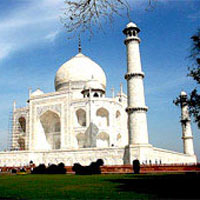 21D/20N
21D/20N
World Heritage Site India Tours
New Delhi - Varanasi - Khajuraho - Agra - Jaipur - Udaipur - Chennai - Kochi - Kuma..
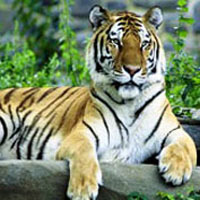 16D/15N
16D/15N
New Delhi - Nagpur - Kanha - Bandhavgarh - Agra - Bharatpur - Ranthambore - Jaipur
 13D/12N
13D/12N
 19D/18N
19D/18N
Wildlife Sanctuary Parks and Cultural Tour
New Delhi - Varanasi - Khajuraho - Bandhavgarh - Agra - Bharatpur - Ranthambore - J..
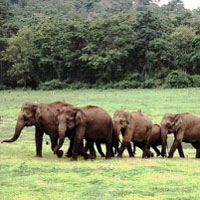 9D/8N
9D/8N
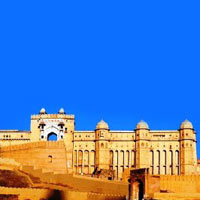 7D/6N
7D/6N
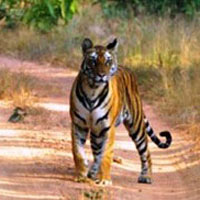 10D/9N
10D/9N
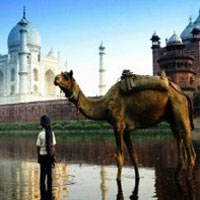 16D/15N
16D/15N
Golden Triangle + Camel Safari Tour
Agra - Bikaner - New Delhi - Jaipur - Jodhpur - Mandawa - Udaipur
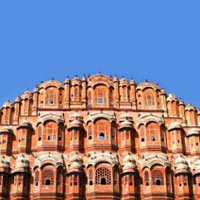 6D/5N
6D/5N
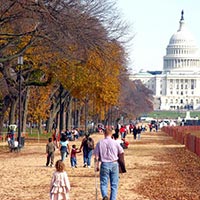 20D/19N
20D/19N
Classique America with Seattle & Alaska ..
Las Vegas - Los Angeles - Washington - Pennsylvania - New York - San Francisco - Se..
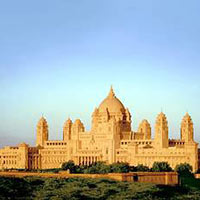 20D/19N
20D/19N
Agra - Jaipur - Ranakpur - Jodhpur - Jaisalmer - Bikaner - New Delhi - Chittorgarh ..
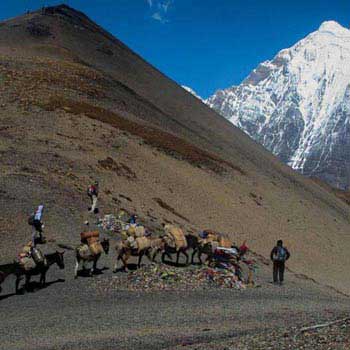 20D/19N
20D/19N
 20D/19N
20D/19N
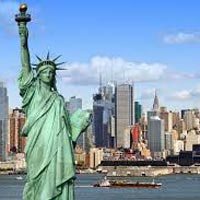 20D/19N
20D/19N
New York - Las Vegas - Los Angeles - San Francisco - Washington - Orlando - Harrisb..
 20D/19N
20D/19N
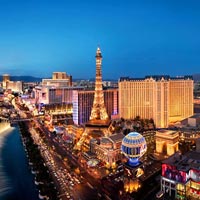 20D/19N
20D/19N
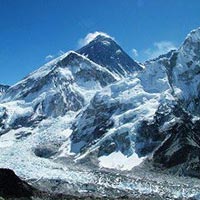 20D/19N
20D/19N
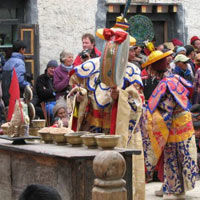 20D/19N
20D/19N
 7D/6N
7D/6N
6 Nights - 7 Days West Bengal Tour From ..
Puri - Kolkata - Bhubaneswar - South 24 Parganas
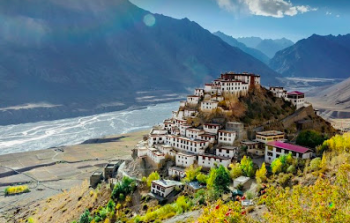 7D/6N
7D/6N
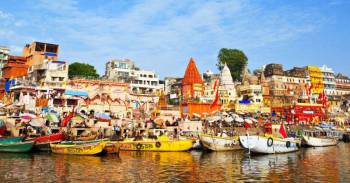 12D/11N
12D/11N
Uttar Pradesh Tour Package 11 Night - 12..
Varanasi - Bodhgaya - Puri - Kolkata - Ayodhya
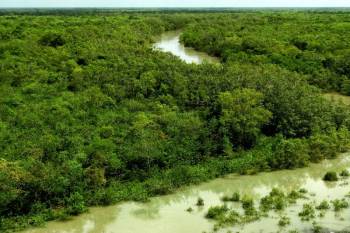 9D/8N
9D/8N
 8D/7N
8D/7N
8 Days Guwahati - Kaziranga - Shillong -..
Guwahati - Shillong - Kaziranga - Dawki
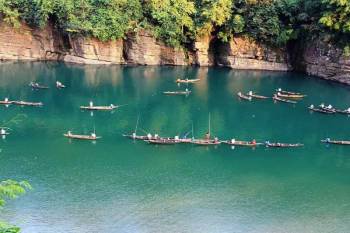 8D/7N
8D/7N
8Days Kaziranga - Shillong - Cherrapunji..
Guwahati - Shillong - Cherrapunji - Kaziranga
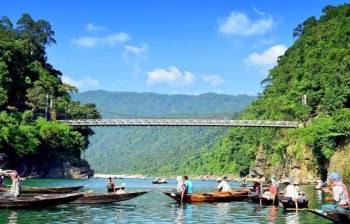 8D/7N
8D/7N
7 Night And 8 Days Assam Tour Package - 2
Guwahati - Shillong - Kaziranga - Dawki
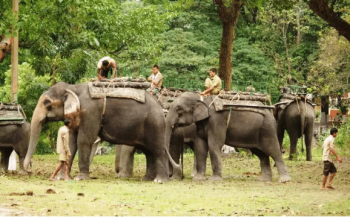 8D/7N
8D/7N
7 Night And 8 Days Assam Tour Package - 1
Shillong - Cherrapunji - Kaziranga - Guwahati
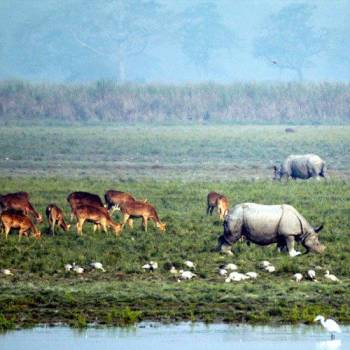 8D/7N
8D/7N
7 Night Kaziranga - Shillong - Cherrapun..
Guwahati - Shillong - Cherrapunji - Kaziranga